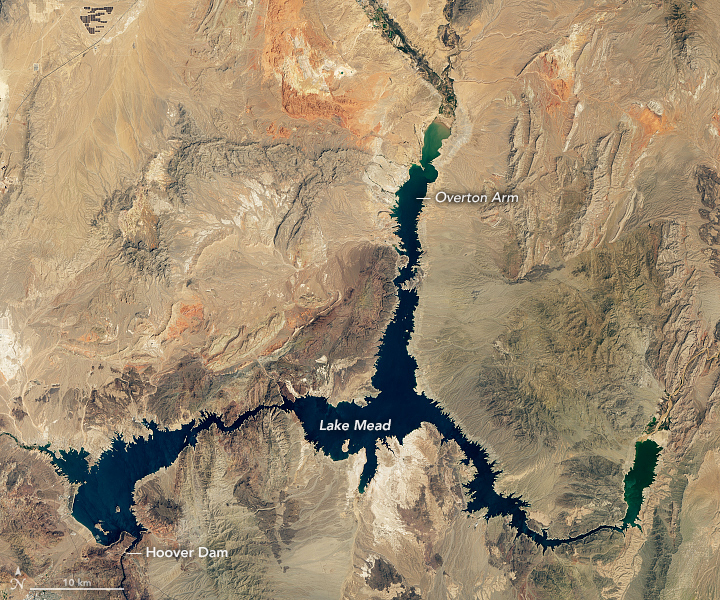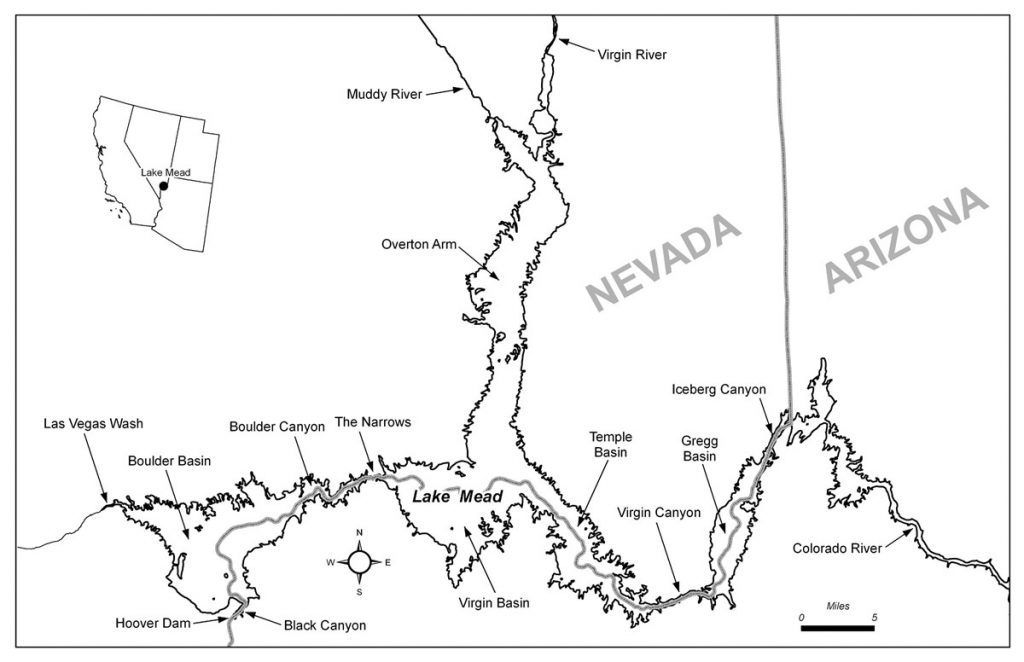In recent weeks, attention has been drawn to the west as it endures a severe drought, some referring to it as a megadrought. This is when an area experiences extreme dryness for two decades or longer. According to the U.S. Drought Monitor, the western side of the United States is measured as D4- exceptional drought, the highest in the scale.
History of Lake Mead
Before discussing Lake Mead’s drop in water levels, it is important to understand the history and background of this reservoir.

The Hoover Dam, located in Nevada, was constructed as the first multipurpose dam built by the federal government. It was authorized by the Boulder Canyon Project Act in 1928. The plan was for the dam to aid in flood control, navigation, and generation of electrical energy. Consequently, when the Hoover Dam was completed in 1936, it created Lake Mead.
According to the National Park Service, Lake Mead is the largest man-made water reservoir supplying over 25 million people with water. This body of water is shared by the states of Nevada and Arizona. Most importantly, Lake Mead mainly provides a source of water to the Western side of the United States.
In fact, Lake Mead is only one of many waterways winding through this desert area. To the north-east end of the Colorado river, the Glen Canyon Dam was constructed in 1963. This new dam created Lake Powell. Meanwhile, the elevations of Lake Mead dropped significantly while Powell filled.
Subsequently, Lake Powell reached the minimum water level in 1965. However, it wasn’t until July of 1983 that Lake Mead reached its peak elevation at 1225.44 feet. Since the year 2000, Lake Mead has never reached the 1,200 ft level again (National Park Service).
Current Status of Lake Mead

The Bureau of Reclamation is responsible for allocating how much water is distributed to each state. They found that over the past two decades, the largest decline of elevation in one year was from June 2021 to June 2022. During this past year, the elevation has dropped 25.75ft. In a 20 year period, the last time a drop like this occurred was between June 2013 to June 2014 with a 23.32ft decline.
These elevation levels are extremely important because once they reach 1,050 feet the Lake is considered to be an “inactive pool.” Unfortunately, the lake has now already reached below this mark. Consequently, as of June 2022, the Intake No. 1 valve has surfaced at the current elevation level of 1043.02ft. To clarify, intake valves are essential in transporting the water to treatment plants to be processed into drinking water (USA Today).
Photos by NASA Earth Observatory


What does this mean?
Above all, the drought impacting the west and the rest of the world is going to impact more than just water usage. For the United States, the agricultural sector is going to be greatly impacted. In the desert, agricultural farms have been maintained by the water from Lake Mead. This will include two-thirds of the U.S.’s supply of fruits and nuts, and a third of veggies (ABC News).
In order to combat this impact, the Bureau of Reclamation is advising the nearby states to create emergency plans. For instance, reducing water consumption. This includes Arizona, Nevada, California and even parts of Mexico. When finding a solution, states will have to consider two aspects. In short, the solution will need to retain the current volume of water in Lake Mead. Additionally, it will also have to present a plan for long-term water regulation. In other words, a new infrastructure bill was passed. Hopefully, the funds allocated to the Bureau of Reclamation can provide water saving programs and efficiency in design (Los Angeles Times).
Most importantly, state and national plans regarding water sustainability will need to address growing needs of the population and environment. In other words, supplying the need for water while also replenishing the limited water held in the Colorado River Basin.
What can you do?
Unfortunately, this drought is not new, it is only just sparking recognition at it’s increasing severity. If you would like to read about the drought’s history, check out our article on West Coast Drought: Scarcities In Water And Food.
While reducing how much water used in individual households may not seem so significant, it positively impacts the situation at hand. If you want to learn some ways to conserve your water, check out our article on 10 Easy Ways To Conserve Water Daily.
Sources
1. https://www.nps.gov/lake/learn/nature/storage-capacity-of-lake-mead.htm
2. https://www.nps.gov/lake/learn/nature/overview-of-lake-mead.htm#:~:text=Hydrology,miles%20upstream%20of%20Hoover%20Dam
3. https://www.cnn.com/2022/07/11/us/lake-mead-drought-ww2-higgins-craft/index.html
4. https://www.usatoday.com/story/news/nation/2022/05/01/water-issues-worsen-lake-mead/9585175002/
5. https://www.latimes.com/environment/story/2022-06-20/as-colorado-river-reservoirs-drop-states-urged-to-act-now
6. https://www.usbr.gov/lc/region/g4000/hourly/mead-elv.html
7. https://droughtmonitor.unl.edu/
8. https://youtu.be/OOE-WV9bXkI
9. https://earthobservatory.nasa.gov/images/148758/lake-mead-drops-to-a-record-low
10. https://www.nps.gov/lake/learn/drought.htm









